In a Nutshell:
- Because of what’s known as the “fragrance loophole,” there are over 3,500 different chemicals that can legally “hide” in perfume, making it impossible for you to know what’s actually in them.
- This is how toxic chemicals like phthalates and other endocrine disruptors end up in much of the perfume sold today.
- Henry Rose and by/rosie jane are two of the best non-toxic and phthalate-free perfume brands. Scroll down for more recommendations!
If you’ve done even a little bit of research on non-toxic products, you’ve likely come across the problem with the word “fragrance” and how it’s used in personal care and cleaning products.
We have another blog article dedicated to a deep dive on fragrance, but the short of it is that there is a legal loophole which allows over 3,500 ingredients to exist undisclosed under the label “fragrance” or “parfum”.
Because of this law, conventional perfume, cologne, body spray, other fragrances and beauty products are often filled with toxic ingredients like phthalates, carcinogens, and other chemicals — and you essentially have no way of knowing about it.
But don’t worry: there are plenty of non-toxic and natural perfume brands that are prioritizing safe and transparent ingredients, and I’ve rounded them up for you in this article.
Table of Contents: Phthalate-Free & Non-Toxic Perfume
- Is Wearing Perfume Bad For You?
- Eau de Toilette vs. Eau de Parfum vs. Perfume
- Synthetic Fragrances vs. Natural Essential Oils
- Should You Go Fragrance-Free?
- The Best Non-Toxic & Phthalate-Free Perfume Brands (With Feminine, Masculine, & Gender-Neutral/Unisex Scents)
- Henry Rose
- by/rosie jane
- DIME
- PHLUR
- Cultus Artem
- Los Feliz Botanicals
- Heretic
- Summer Solace
- {blade + bloom}
- Lvnea
- Gather
- Smoke
- Alchemy Slow Living
- 6 Additional “PRETTY GOOD” Phthalate-Free Perfume Brands
- Most Toxic Perfume Brands
- An Even Deeper Dive into Perfume
- Final Thoughts on Phthalate-Free & Non-Toxic Body Sprays & Fragrances
This post contains affiliate links, which means we may earn a small commission if you choose to make a purchase. We only make honest recommendations. This article is co-written by Jaclyn Stephens and Abbie Davidson.
Is Wearing Perfume Bad For You?
Do perfumes contain toxic chemicals? The short answer is: yes, most of them do.
One 2016 study shows that 35% of those studied suffered some sort of negative consequence—from migraines to respiratory issues—when exposed to fragrance.
Many people, however, won’t notice any acute, immediate effects of spraying or dabbing themself with perfume each day. However, the problem with the hidden chemicals used in almost all conventional perfumes come from being used over time.
Endocrine disruptors like phthalates, for example, add to one’s overall toxic burden (the total amount of environmental toxins you’re exposed to and absorbing on a day-to-day and year-to-year basis). This toxic burden can cause problems over a long period of time, even in an otherwise healthy person.
A few potential adverse health effects of common perfume chemicals are:
- neurotoxicity
- nervous system damage
- kidney damage
- respiratory issues
- ataxia
- inflammation, especially in the intestines
- dizziness
- fatigue
- decreased fertility and reproductive problems
What Do Endocrine Disruptors Like Phthalates Do?
Phthalates are commonly used in fragrances to make the scent last longer on your skin and clothes.
But phthalates are known endocrine disruptors, which means they can interfere with healthy hormone functioning and lead to all kinds of negative health concerns down the road, including infertility and cancer.
Endocrine disruptors have been linked to things like:
- decreased sperm motility
- fertility
- genital abnormalities in baby boys
- asthma
- allergies
- and much more
It’s estimated that around 20-30% of the population has some sort of sensitivity to fragrances, and it’s getting much worse. (A 2018 study found an over 300% increase in Multiple Chemical Sensitivities compared to the decade prior.)
There is a rising number of people who struggle with things like allergies, asthma auto-immune disease, multiple chemical sensitivity, autism, and other chronic conditions. These folks may become even more sensitive to certain ingredients and scents.
Pregnant people and infants are also more susceptible to the negative effects of these fragrance chemicals. If you or a loved one fits into one of these categories, it’s all the more important to use non-toxic perfume.
Other Toxic Chemicals in Perfume
In addition to phthalates, the potentially toxic ingredients that are commonly found in perfume include (but are not limited to:
- acetaldehyde, which can affect the reproductive, nervous and respiratory systems
- benzophenone, which is linked to endocrine disruption and organ system toxicity
- butoxyethanol, which is an irritant, reproductive toxicant, and carcinogen
- methylene chloride, which is possibly carcinogenic
- musk ketone and other synthetic musks, which are endocrine disruptors
- styrene, a carcinogen
Eau de Toilette vs. Eau de Parfum vs. Perfume
As you shop for perfume, it might be helpful for you to understand the difference between a few different terms. These different types of fragrances generally refer to the concentration of scent and how long the smell will likely last.
- Perfume: This tends to have the highest concentration of scent with the strongest and longest-lasting smell (usually 20-30% concentrated).
- Eau de Parfum (or just Parfum): This is the middle of the road when it comes to scent concentration (usually 15-20%).
- Eau de Toilette: This has the most subtle scent concentration (5-15%).
- Cologne: In North America, “cologne” is most frequently thought of as men’s fragrance. In other parts of the world, cologne is actually a term used to indicate an even lighter fragrance option, with about 2-4% concentration.
Most of the time, these options are available in an alcohol-based spray form, of course, but you’ll also find solid perfume and roll-on oils.
If alcohol-based sprays are too drying or irritating for you, try going with a roll-on perfume oil instead of an alcohol-based spray.
Those who are extra sensitive to chemicals may want to go for one of the lesser concentrated options.
Synthetic Fragrances vs. Natural Essential Oils
The last thing you may be wondering about as you shop is the difference between synthetic and natural perfumes and ingredients.
It’s worth bearing in mind that just because an ingredient is synthetic does not automatically mean it’s “bad,” and just because an ingredient is natural or plant-based does not automatically mean it’s “good.”
Some natural fragrances can be allergenic for people, some synthetic fragrances are actually more sustainable when made in a lab.
At the end of the day, it comes down to preference. Some just prefer natural scents while, while others like a more unique smell that can really only be created via synthetic blends. Some may prefer to only buy fragrances with ingredients they can actually recognize, and I get that, too.
I’ve included all kinds of options below so you can choose what’s best for you!
Should You Go Fragrance-Free?
If you’re just starting your low-tox lifestyle and are feeling overwhelmed, one thing I (Abbie) usually suggest is that you start by eliminating some of the products you don’t actually need to wear every day.
Things like perfume, nail polish, scented fabric sprays… You don’t really need to use those types of products.
By eliminating them (at least for a period of time), there are less ingredient lists you have to worry about, and you can significantly cut down on your exposure to all sorts of chemicals almost immediately. (And you can save some money, too!)
Then if you want to, you can always add these products back in later, as you find safer versions of them. Some people find it’s actually just simpler and easier to continue going fragrance-free.
But there’s another reason why you may want to consider going fragrance-free and that has to do with accessibility and communal support.
By going fragrance-free, you’re being mindful of the folks around you—be it in your workplace, at the grocery store, etc.—who may have chemical sensitivities.
I have had to leave a coffee shop before because the woman who sat down beside me was wearing perfume that I couldn’t handle. I’ve sat through shows at the theater, anxious the whole time about a strong scent around me.
And I am only mild to moderately sensitive to fragrances; I know there are folks out there who are more sensitive than I am.
If you don’t want to completely eliminate your body sprays, then maybe you could just cut back and wear less. (Alternating your scents could help, too. If you wear the same scent every day, then you’re more likely to become accustomed to it and spray more.)
All of that said, I know how much folks love perfume… I get it! So if you are going to wear fragrances, of course I would rather you wear a safer one! That’s why we have this guide.
The Best Non-Toxic & Phthalate-Free Perfume Brands (With Feminine, Masculine, & Gender-Neutral/Unisex Scents)
Without further ado, here are our picks for the best ‘clean’ perfume and non-toxic body spray brands that use non-toxic ingredients. Some of them use a mix of safe synthetics combined with natural oils, while others are 100% natural.
You’ll also find a mix of eau de parfum sprays, roll-on perfume oils, serums, solid perfumes, powders, and more. And every single one is phthalate-free.
We’ve also considered sustainable and ethical manufacturing practices when it comes to sourcing their raw materials and managing their supply chain.
Henry Rose
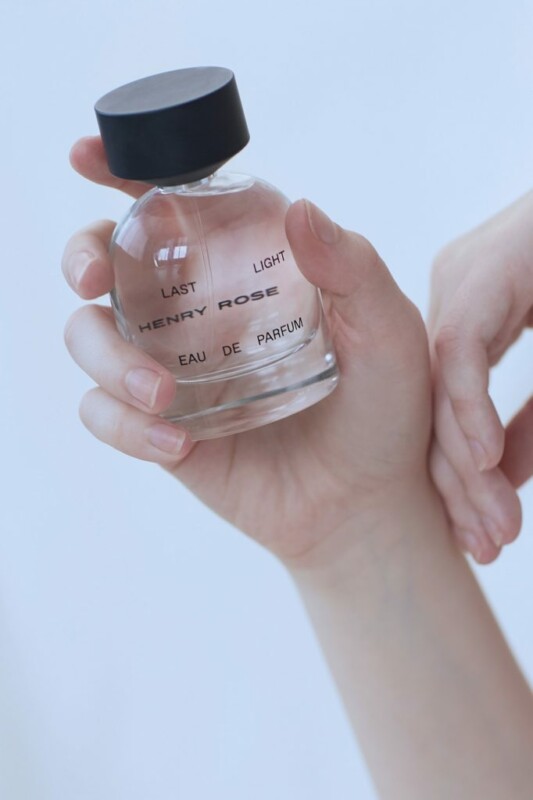
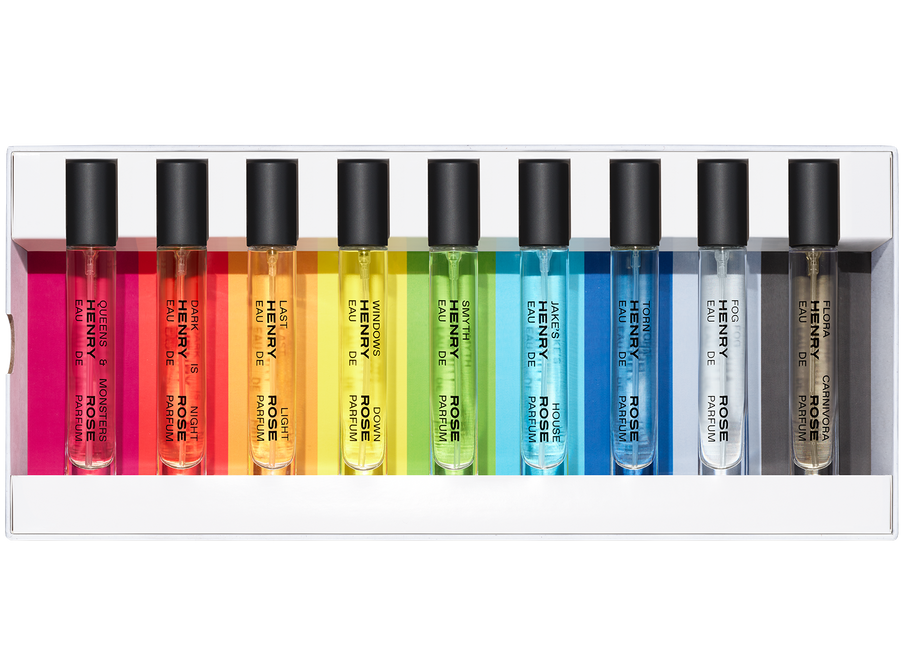
Price Range: $35 (travel spray) – $150 (50mL bottle)
Scent Profile: Feminine, masculine, gender neutral
Products: Eau de perfume, body spray, perfume oil, & other scented products
When it comes to performance and scent profiles, Henry Rose’s unisex fragrances can truly replace the ones you might be used to from conventional department store brands.
Henry Rose has no tolerance for the “fragrance” loopholes in the industry and is committed to telling consumers everything. They are “removing the last black box in the beauty industry, and revealing our mystery.”
Their standards are very strict. Free from a list of thousands of potentially problematic ingredients, Henry Rose was the first fine fragrance to be both EWG Verified™ and Cradle to Cradle Certified™. Plus, their bottles are made from 90% recycled glass and their caps are made from sustainably-sourced and compostable soy. They give back a portion of profits to Breast Cancer Prevention Partners, too.If it’s your first time buying or you don’t know what kind of fragrance you’re looking for, grab one of their Sample Sets! You’ll get mini bottles of all of their fragrances so you can try them out for yourself at home, and then get $20 off a full-sized bottle whenever you make your choice.
by/rosie jane
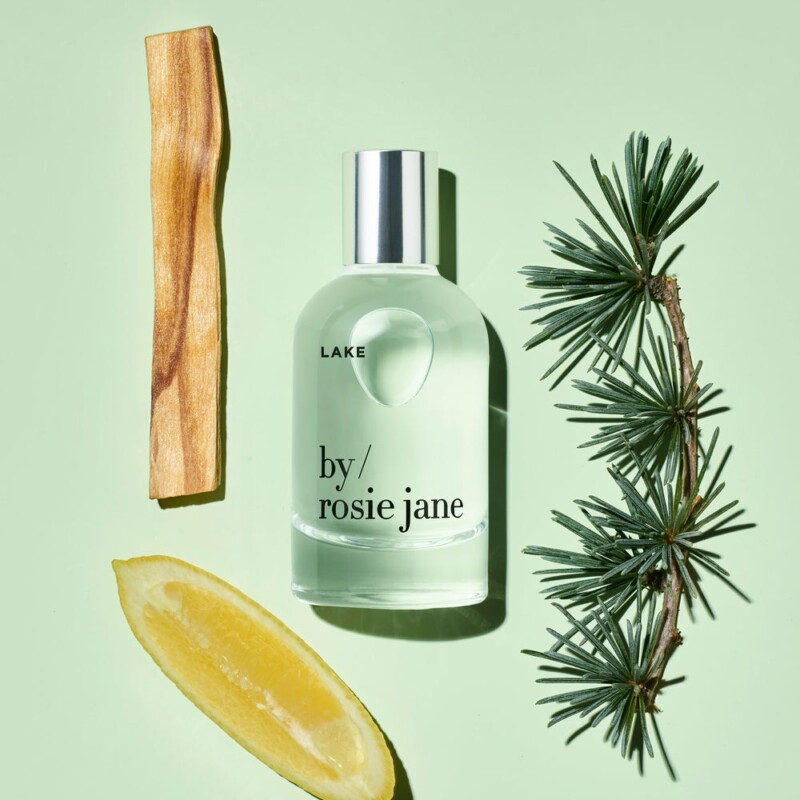
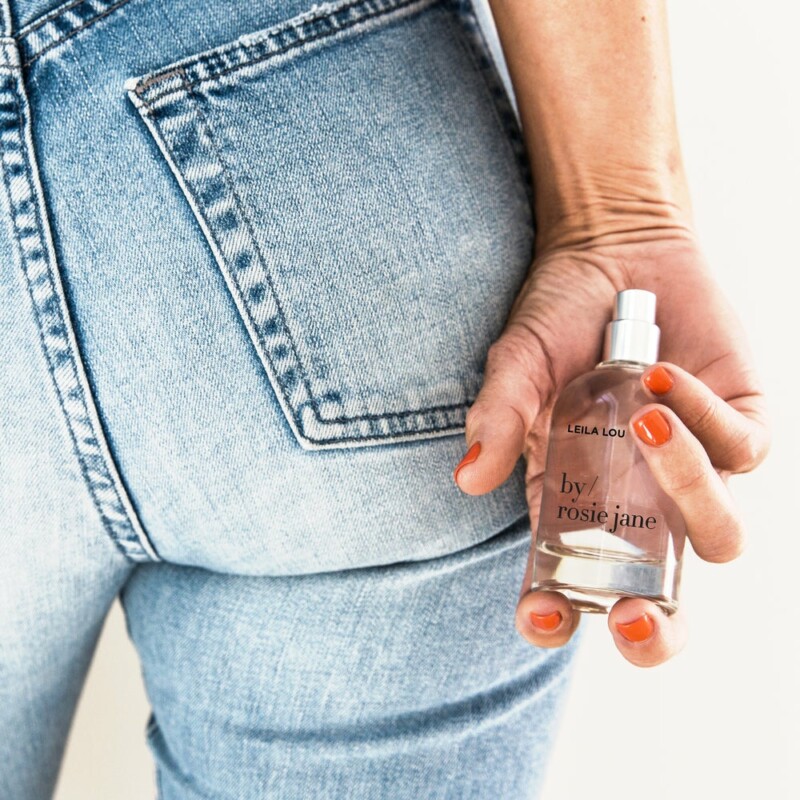
Price Range: $28 (travel spray) – $70 (50 mL bottle)
Scent Profile: Unisex
Products: Eau de perfume, perfume oil, body spray, & other scented products
Hand mixed in Los Angeles, California, by/rosie jane’s vegan and cruelty-free eau de parfum sprays and perfume oils are free from phthalates, parabens, and other endocrine disruptors. Committed to transparency, all ingredients are easily found on each product page. Any allergens (including natural ones linalool) are clearly listed on the product page as well.
by/rosie jane also uses organic ingredients whenever possible, along with 100% recyclable packaging, vegetable based inks, and sustainable paper. They also have a take back program, so you can send them your empties for them to recycle and get credit toward new fragrances.In addition to the full-sized bottles, by/rosie jane also offers roll-on oils, travel sprays, and a Discovery Set so you can try out the different scents before committing to a big bottle.
DIME
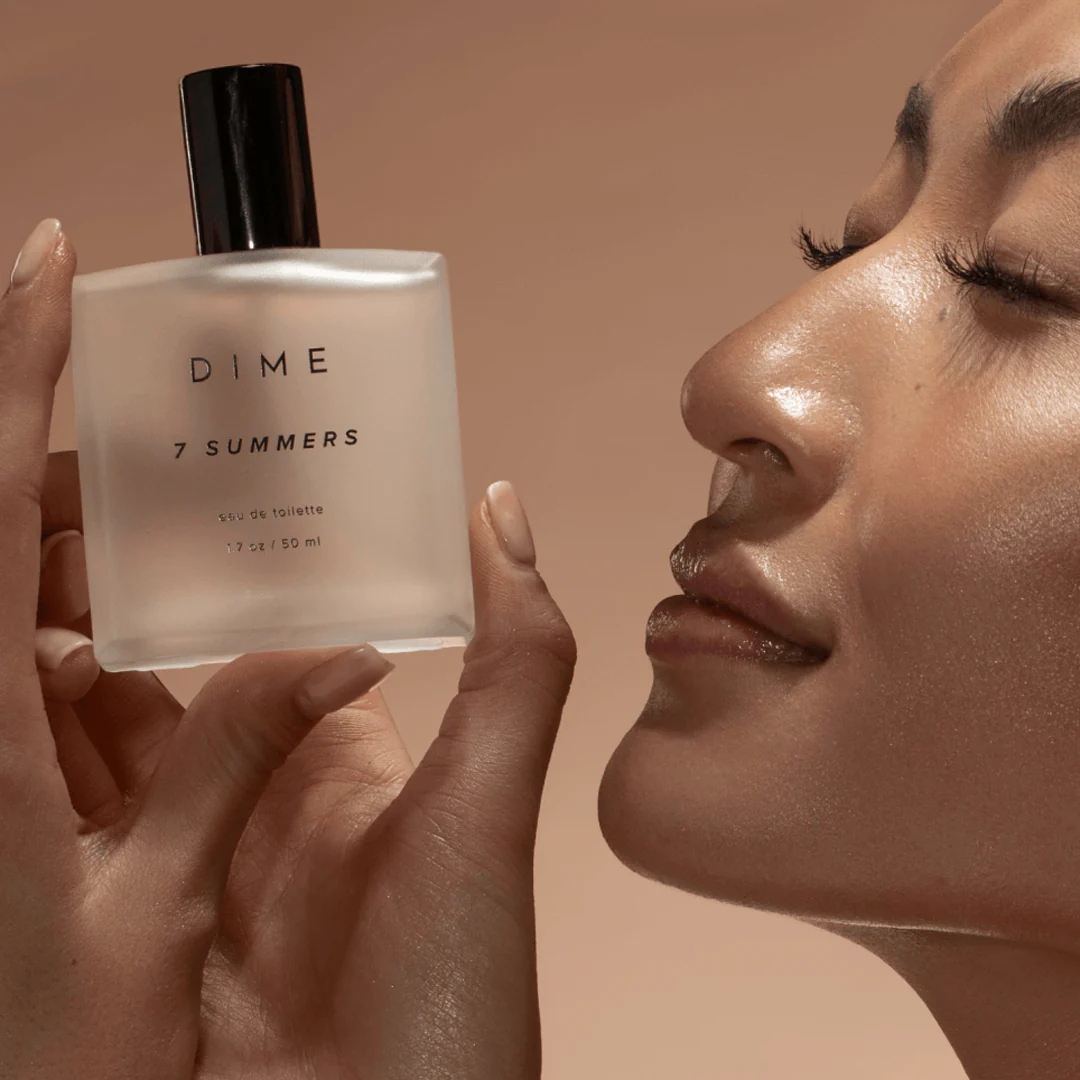
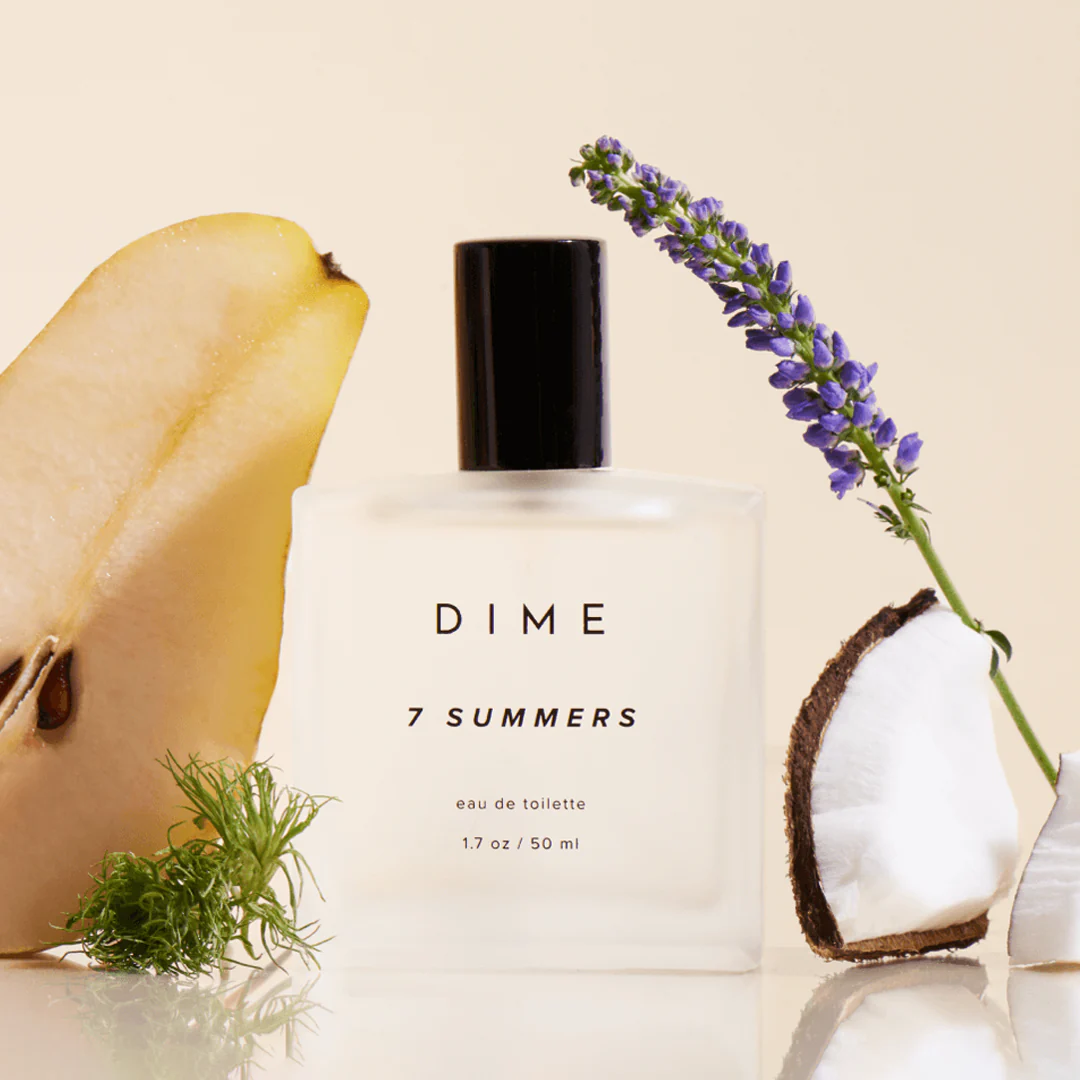
Price Range: $28 (sample kit) – $86 (2-bottle Duo)
Scent Profile: Masculine, feminine
Products: Perfume, cologne
DIME’s vegan and cruelty-free perfume is formulated using EWG’s database. When you click on the “Full Ingredients” list for a specific product, you can actually click on the specific ingredient to find out what the EWG score is, what the ingredient is used for, and a little more info.
Not all of their fragrances are EWG Verified at this time, but the 7 Summers one is! (Many of their other skincare products are EWG Verified as well, so it seems they may be getting their collection Verified gradually.) Everything is phthalate-free and paraben-free.
Many of their scents are targeted more towards women, but they do have a few men’s colognes as well.
PHLUR
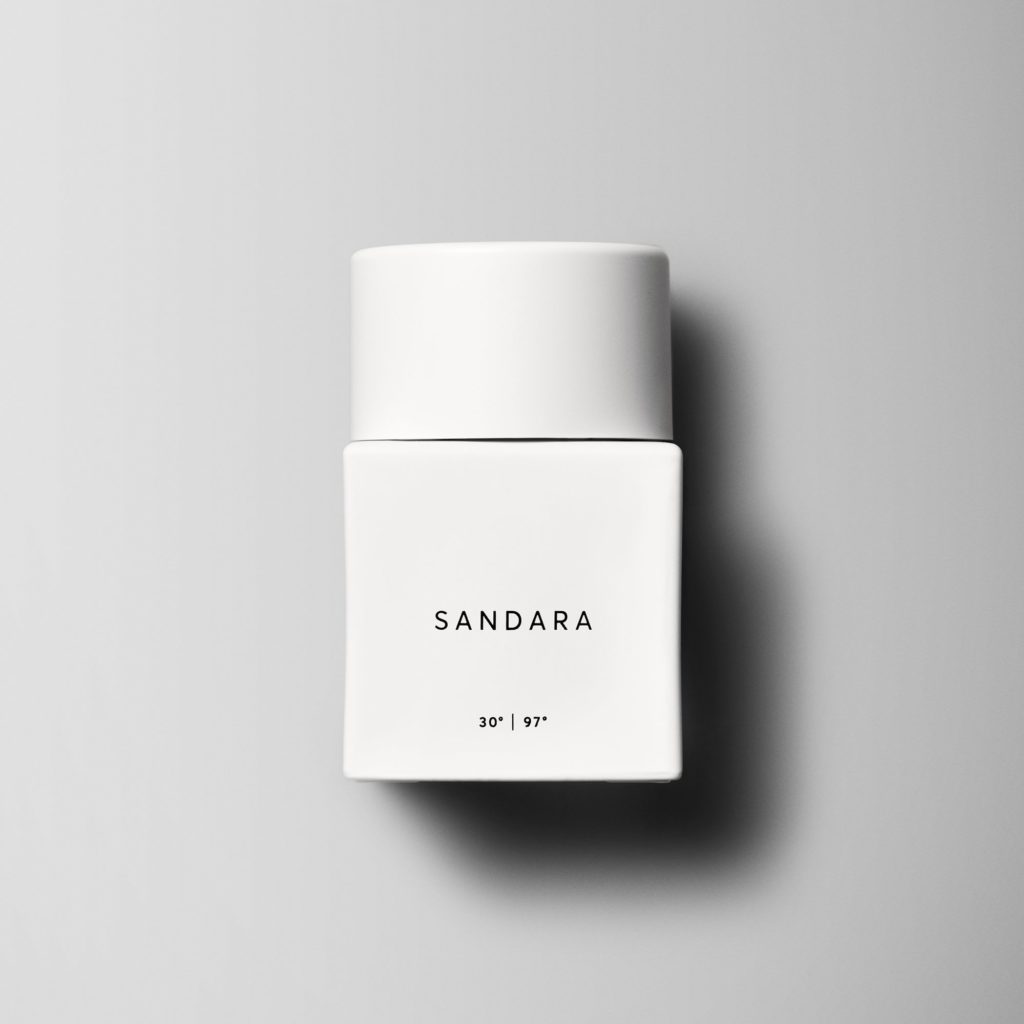
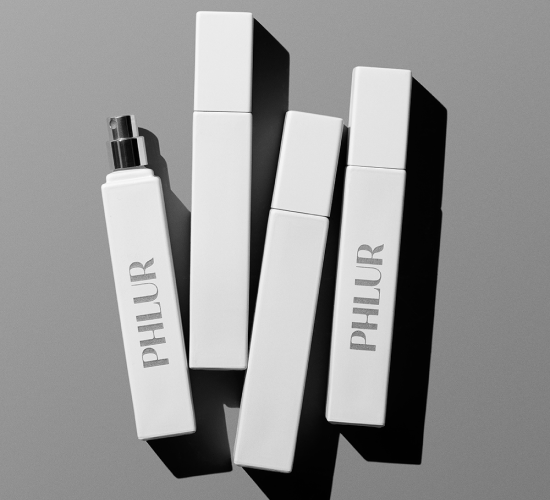
Price Range: $40 (discovery set) — $99
Scent Profile: Gender-neutral
Products: Eau de parfum, body mist, fragrance oil, & others
Committed to high-quality and safe formulations, PHLUR uses both natural and synthetic ingredients, all of which are easily accessible online. They’re also vegan, Leaping Bunny certified cruelty-free, gluten-free, and hypoallergenic.
These perfumes are completely free of BHT, phenoxyethanol, parabens, phthalates, and polycylic and alicyclic musks. Not only that, but the PHLUR team sources their ingredients as responsibly as possible and uses as many recyclable, reusable, renewable, and low-impact materials as they can throughout the entire production process.They offer full-sized fine fragrances, travel-sized bottles, and a Discovery Set to help you figure out which scent is your favorite.
Cultus Artem
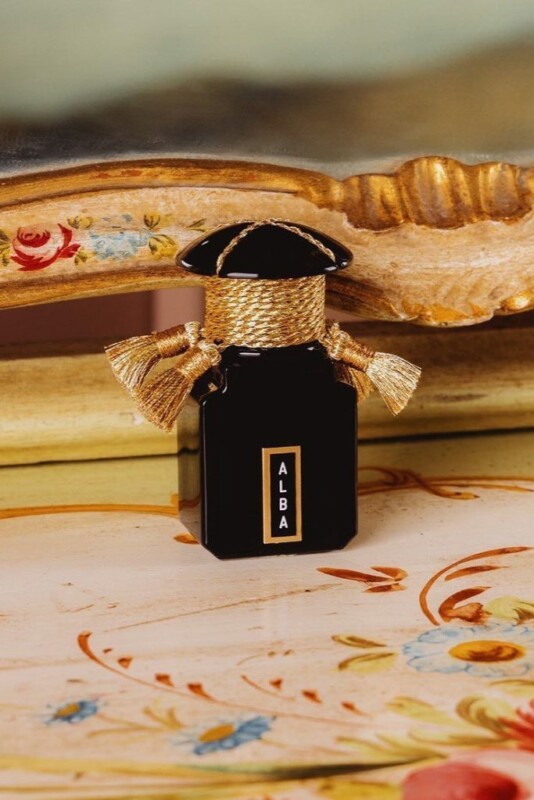
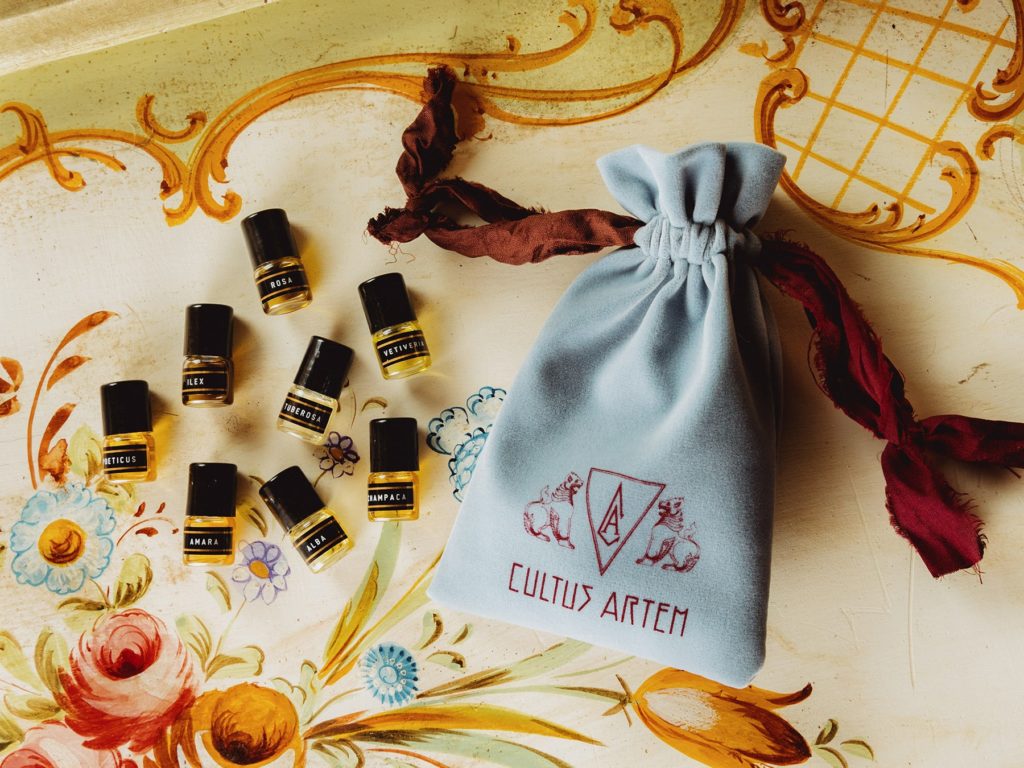
Price Range: $95 (sample flight) – $580 (50 mL bottle of top-tier fragrance)
Scent Profile: Gender-neutral
Products: Eau de parfum
Cultus Artem is unhurried; they produce their fragrances in-house to eschew the mass production and disposable possessions that proliferate our culture today. Their name comes from the latin root words for culture + art-making.
In addition to taking steps to decrease waste throughout the entire production process, the team at Cultus Artem adheres to the European Union standards for ingredient regulations (which are more strict than they are here in the U.S.). They’re completely free of parabens, organosulfates, phthalates, color additives, synthetic dyes, ETA/MEA, DEA, TEA, and toluene.
Los Feliz Botanicals
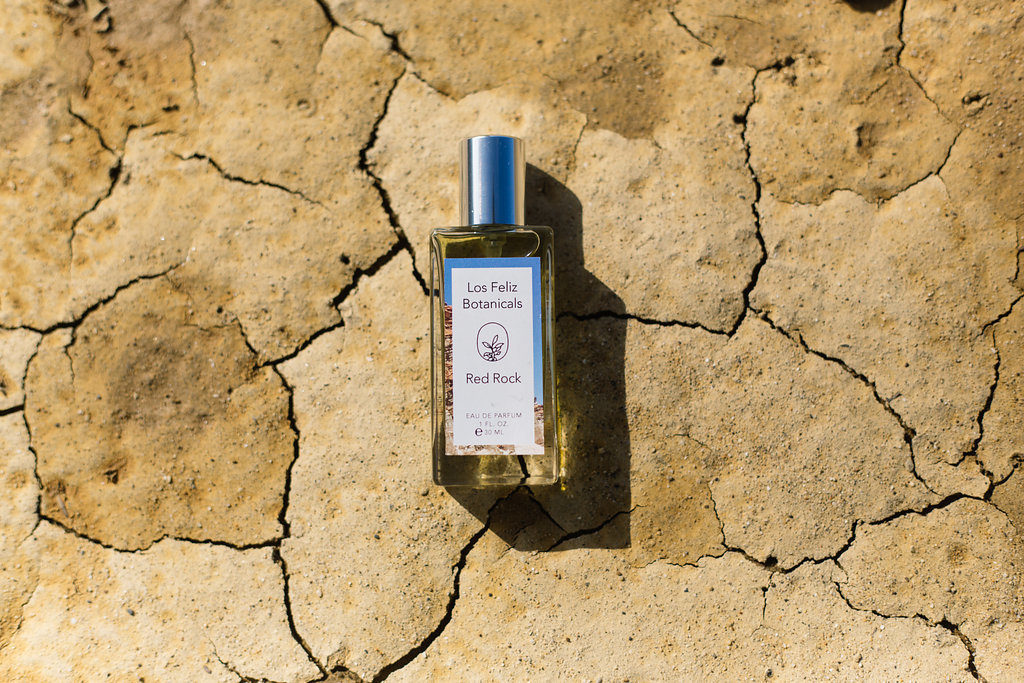
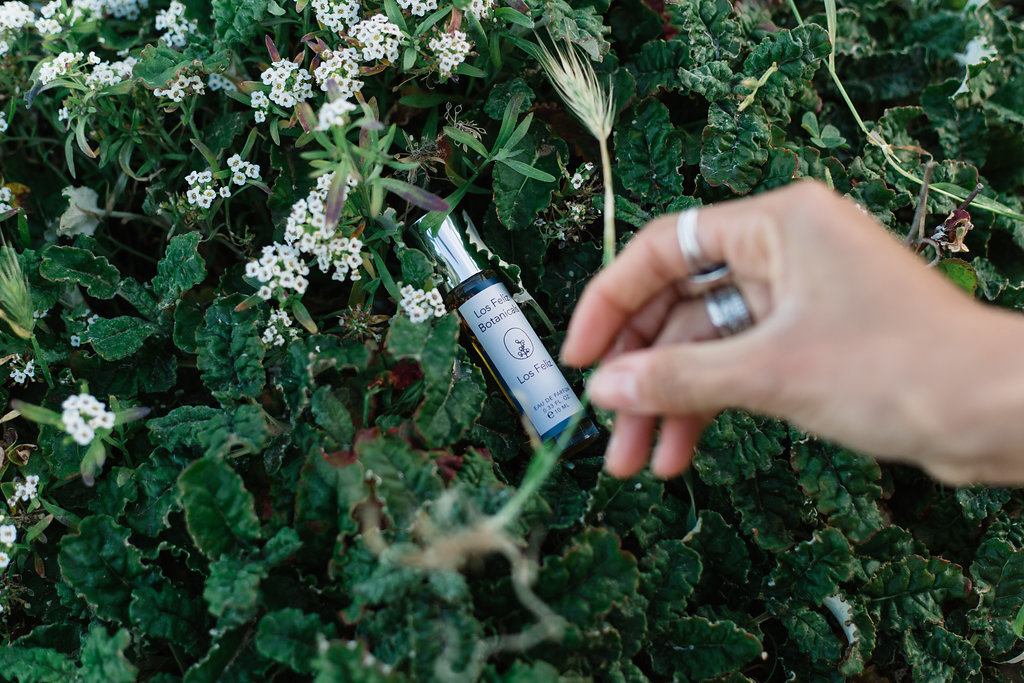
Price Range: $50
Scent Profile: Gender-neutral
Products: Roll-on perfume, sprays, perfume balm
Inspired by the scenes of California, this perfume brand is made with 100% natural ingredients, which means zero synthetic fragrances, preservatives, or fillers. Everything is made in small batches in Los Angeles out of using ethically sourced ingredients. And of course, zero animal testing.
Heretic
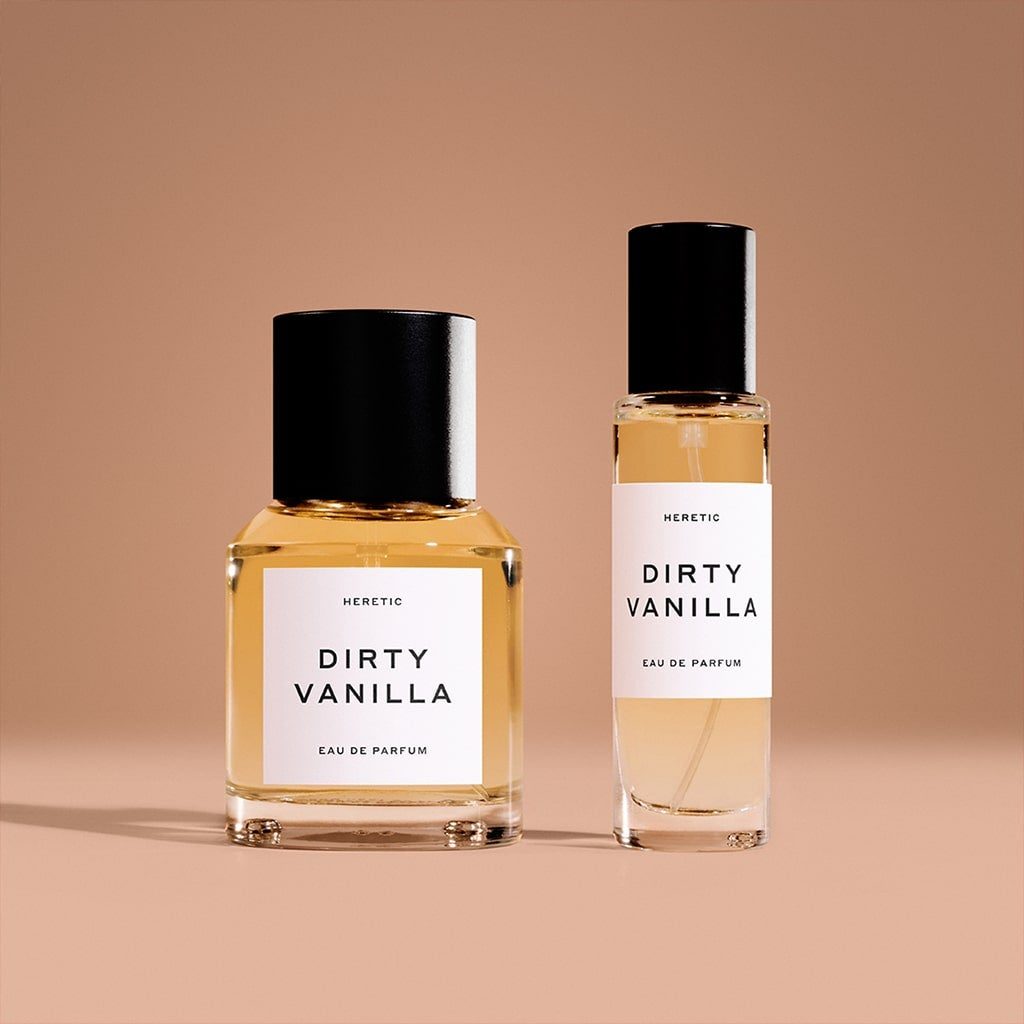
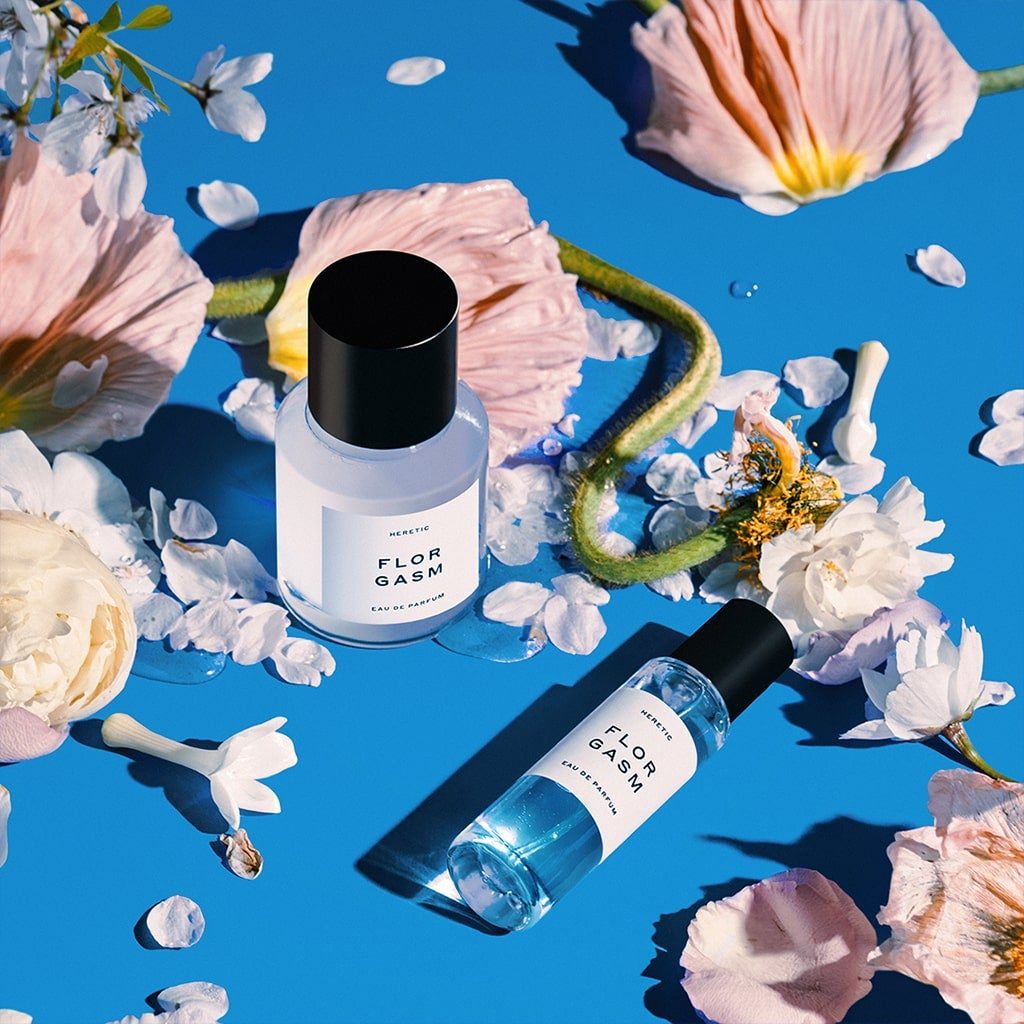
Price Range: $45 (roll-on oil) – $165 (50mL bottle)
Scent Profile: Feminine, masculine, gender neutral
Products: Roll-on perfume oils, eau de parfum spray, & other scented products
These fragrances are for your more “provocative” side.
Although they offer fun and sensual scents like “Dirty Lavender,” “Florgasm,” and “Flower Porn,” their ingredients are far from dirty. These vegan and cruelty-free fragrances are free from phthalates, parabens, synthetic dyes, formaldehyde, and other toxins—all blended together with organic sugar cane alcohol. You can find the full fragrance ingredient list on each product page.
Heretic offers roll-on perfume oils as well as eau de parfum sprays in small and large bottles.
Summer Solace
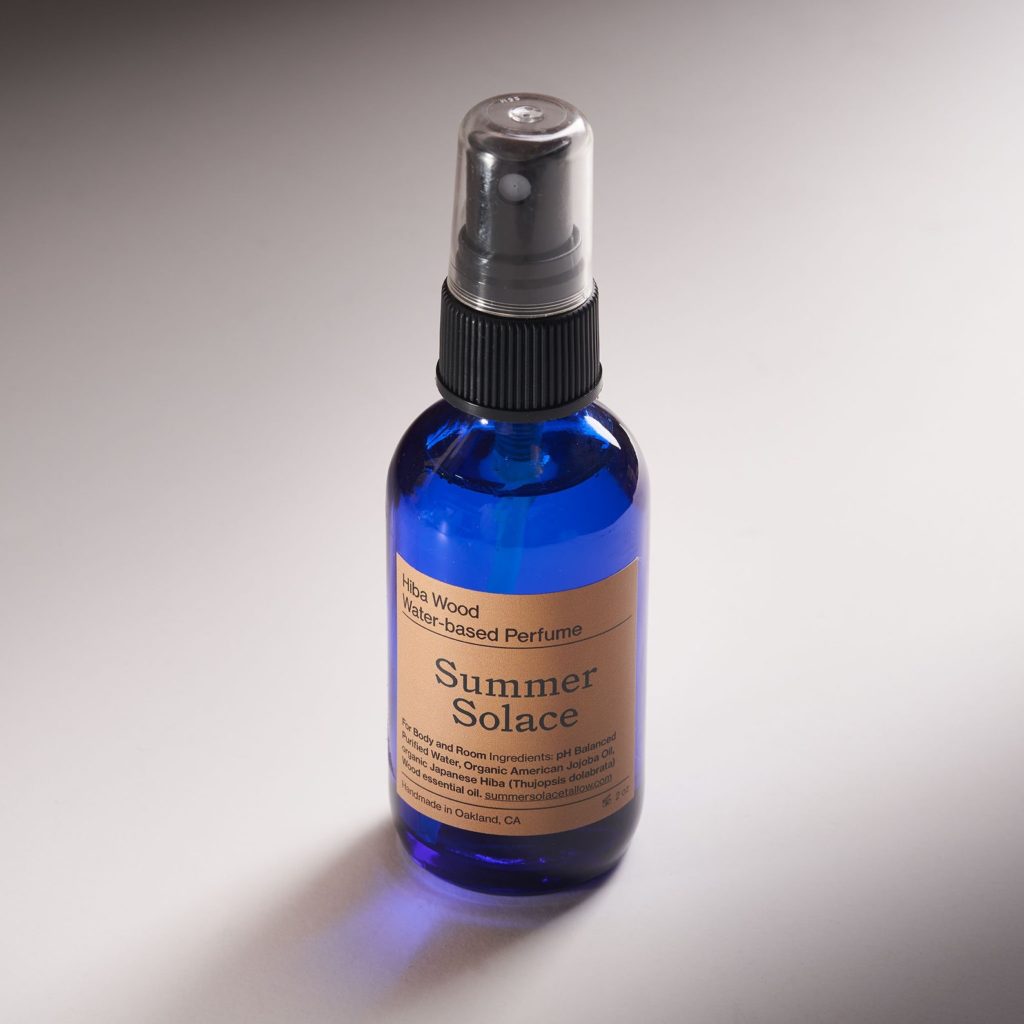
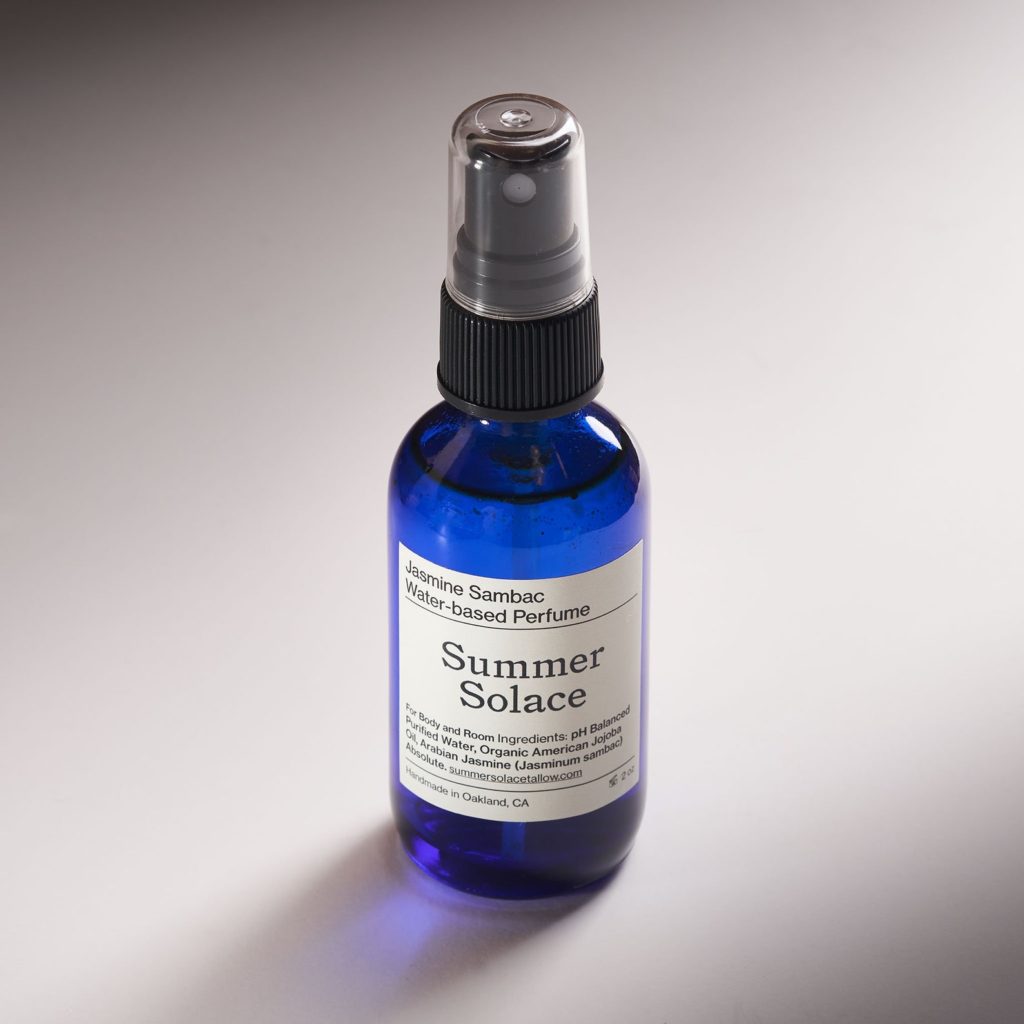
Price Range: $37 – $40
Scent Profile: Masculine, feminine, unisex
Product: Water-based spray
This simple, handmade, water-based perfume spray is made with just a few ingredients: pH balanced purified water and organic plant and essential oils. These make for a great everyday perfume spray that won’t be too strong, even for many individuals who are chemically sensitive.
Established by an organic chef and gardener, Summer Solace Tallow is a small, family-owned business dedicated to the production of slow-made, deeply nourishing, organic tallow-based skincare and home goods. They’re also one of our favorite brands for tallow candles!
{blade + bloom}
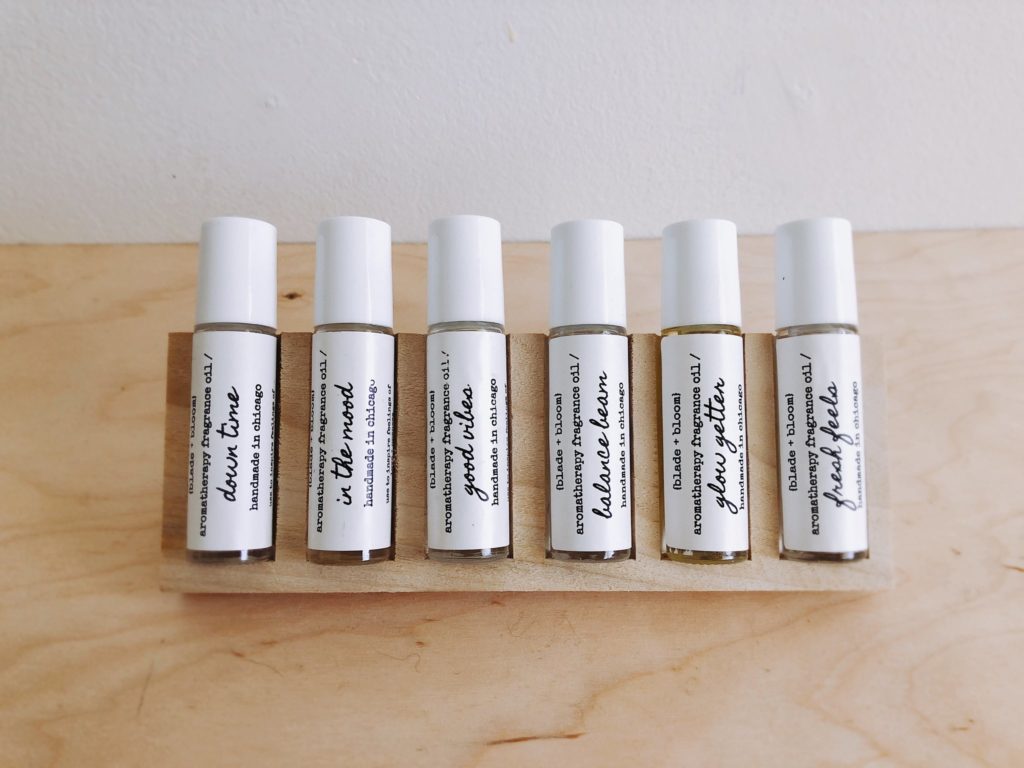
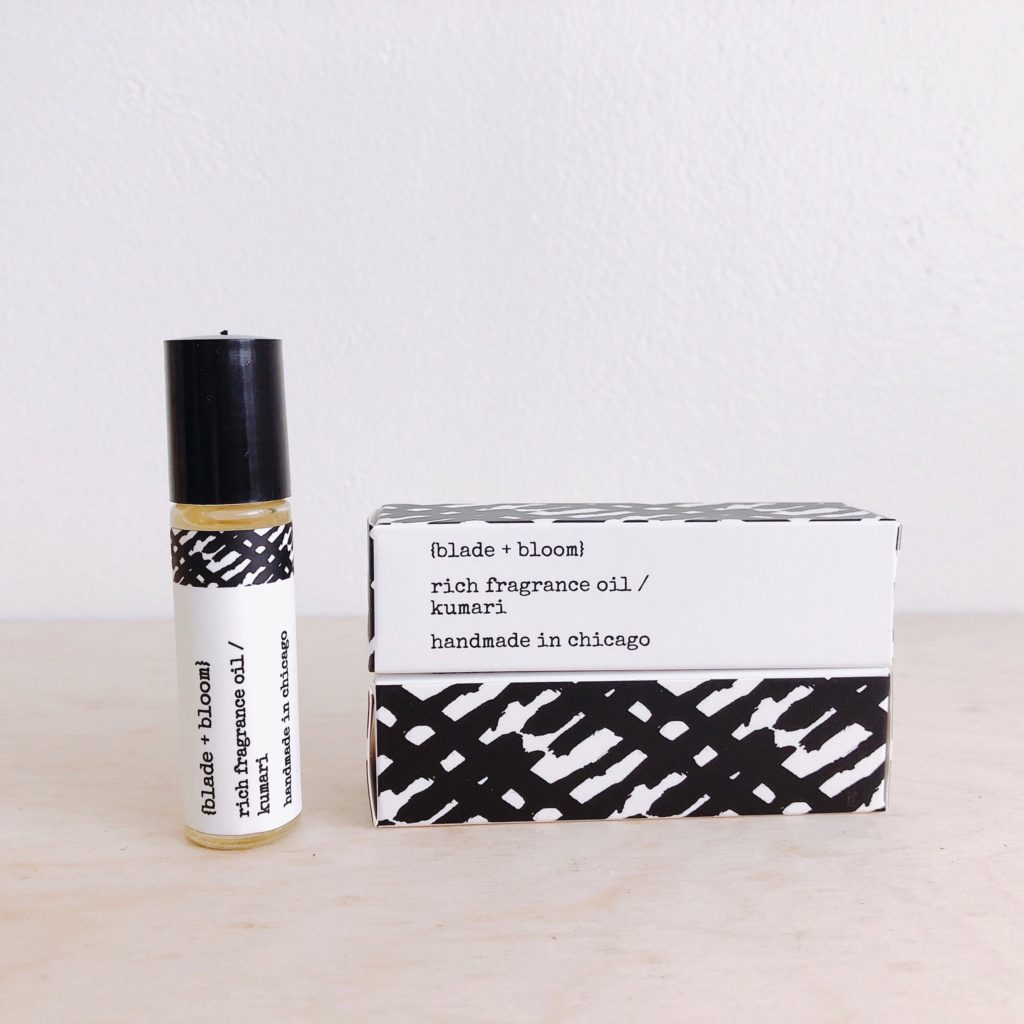
Price Range: $18
Scent Profile: Gender-neutral
Product: Roll-on fragrance oil
{blade + bloom} is a small batch apothecary that creates 100% natural, plant-based products. Their blends are inspired by familiar scent memories (since scent is the strongest memory trigger). Each story is told on the product labels “to read and share.”
{blade + bloom} products range from body scrubs, serums, lotions, to candles, and more. The product that would most serve a “perfume” purpose is their rich fragrance oil, which is made of fractionated coconut oil and essential oils. This product uses body heat to activate the fragrance and its benefits!
All products are handmade in Alabama using high-quality ingredients, packaged in recyclable materials, and feature a minimal design.
Lvnea
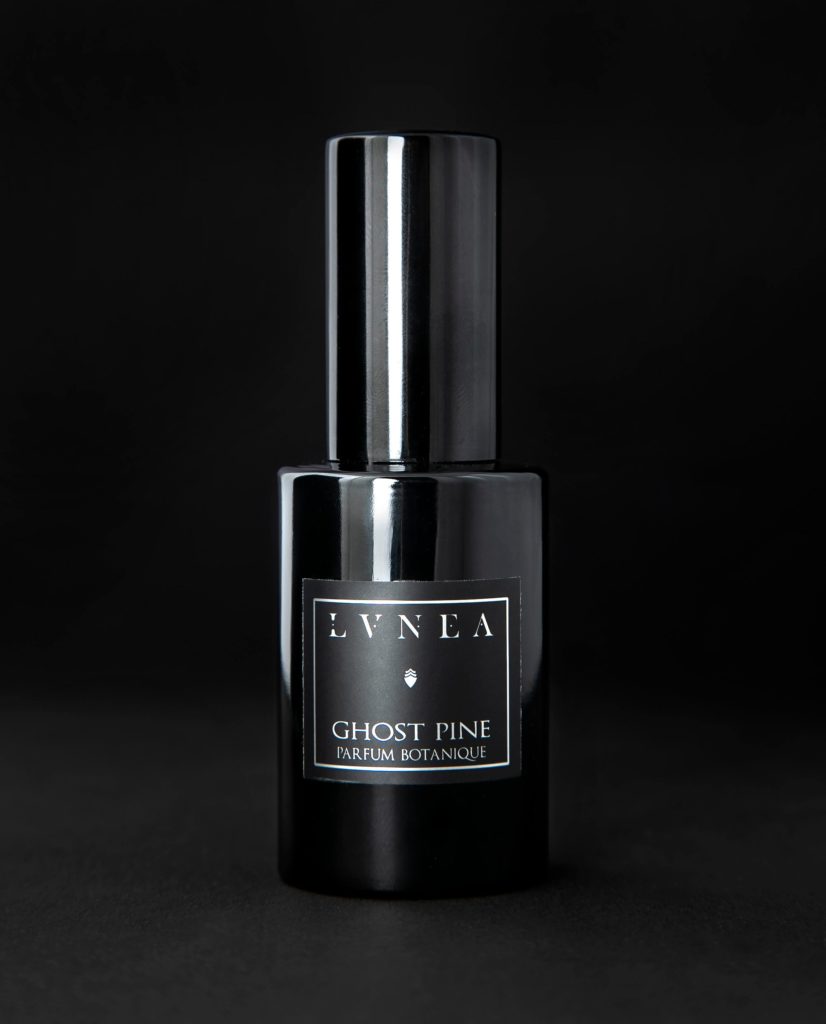
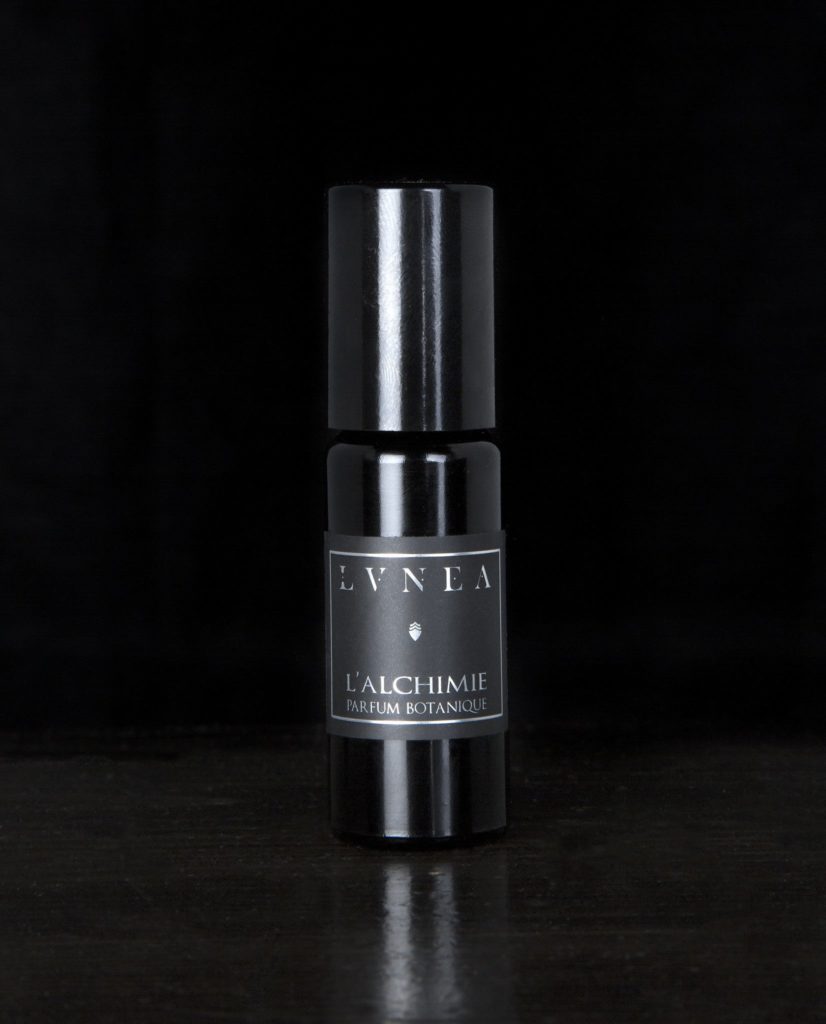
Price Range: $5 (single sample) – $240 (complete sample collection)
Scent Profile: Gender-neutral
Products: Fragrance oil, eau de perfume, eau de cologne, perfume cream, & others
Lvnea is a 100% natural luxury fragrance house that employs an experience-based, nature-focused, and art-forward ethos to create their hand-crafted, natural, botanical, unisex products.
Each scent tells a story and lists the ingredients made from authentic, raw botanical essences.
Gather
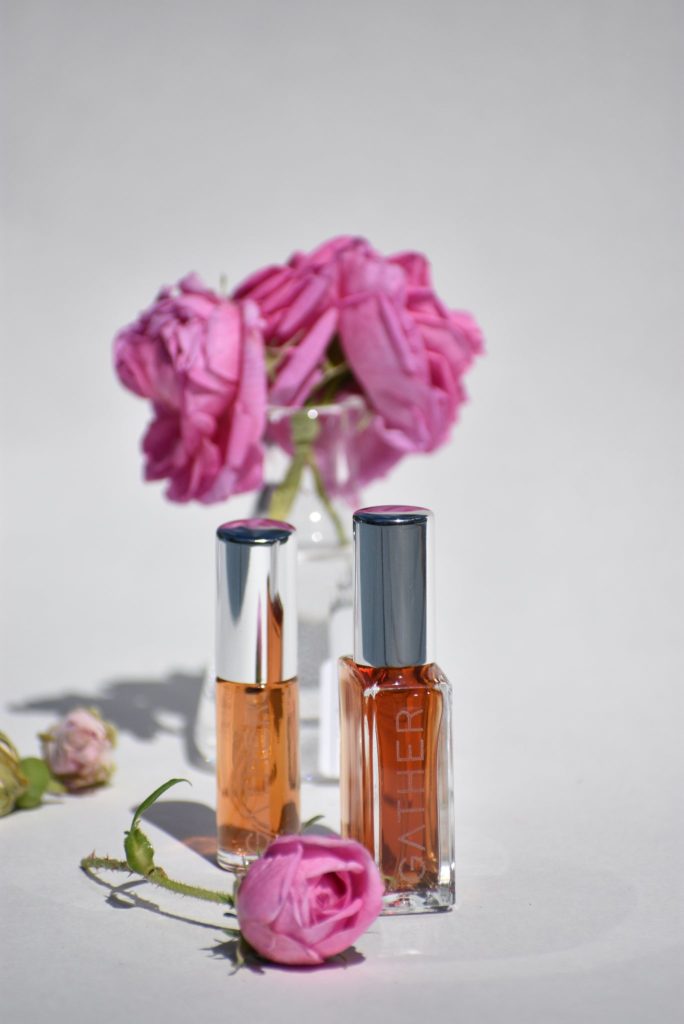
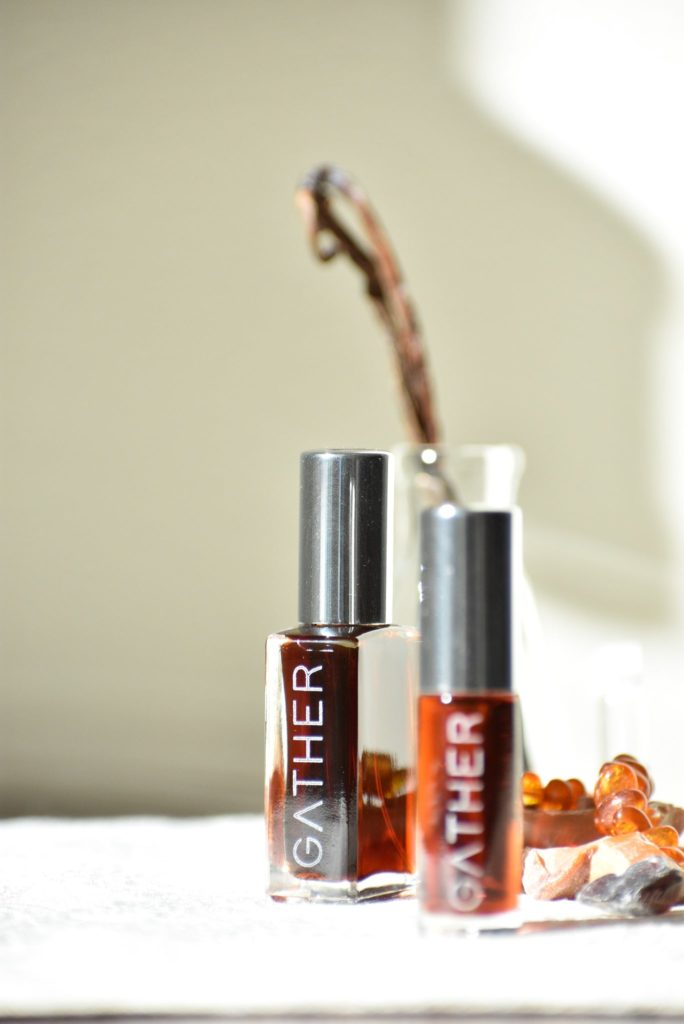
Price Range: $5.50 (5mL bottle) – $82 (9g natural solid perfume)
Scent Profile: intention-based, gender neutral
Products: Eau de toilette, perfume, cologne, and others
Gather emphasizes the enhanced experience of perfumes vs. body oils with historical and all-hand-made notions that honor sensuality, ritual, botanicals, healing, imagination, art, and harmony. Their perfume ingredients, processes, and philosophical identity all are synergistic.
Ingredients are hand-gathered (hence the name), entirely hand-made in small batches of 100% natural botanical aromatics in a stable base of artisanal spirits and/or coconut oil, includes no synthetics, phthalates, petrochemicals, or synthetic preservatives. Animal products are used in some products by way of beeswax, honey, and lanolin.
Smoke
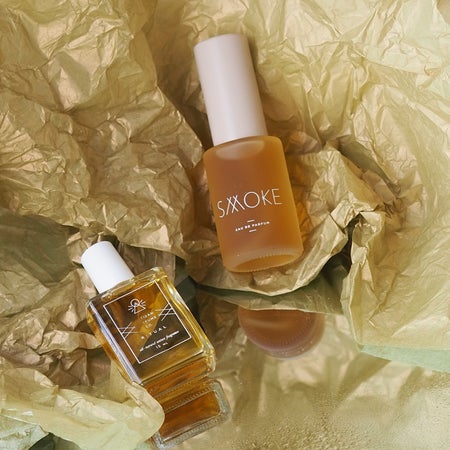
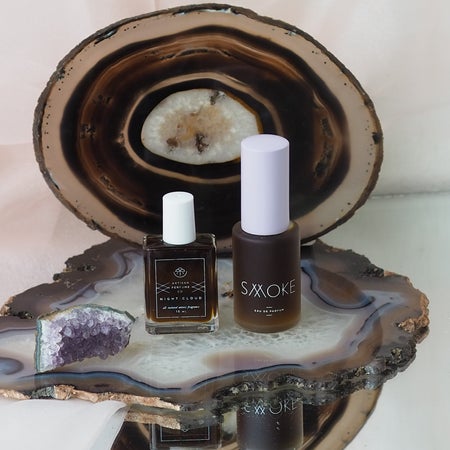
Price Range: $5 (sample set) – $80 (30 mL bottle)
Scent Profile: Gender neutral
Products: Roll-on perfume, eau de parfum, body oil & more
This semi-organic perfume brand offers signature natural perfumes that are meant to invite ceremonial moments.
These gender-neutral perfumes are made out of high-quality, ethically sourced, all-natural ingredients that are distilled straight from their natural source. Smoke uses organic oils or 100% organic perfumers alcohol as carriers and identifies each collection with a color and a feeling personal to founder and owner, Kathleen Currie. The products’ thorough profiles make online fragrance shopping a well-rounded and informed experience.
Alchemy Slow Living
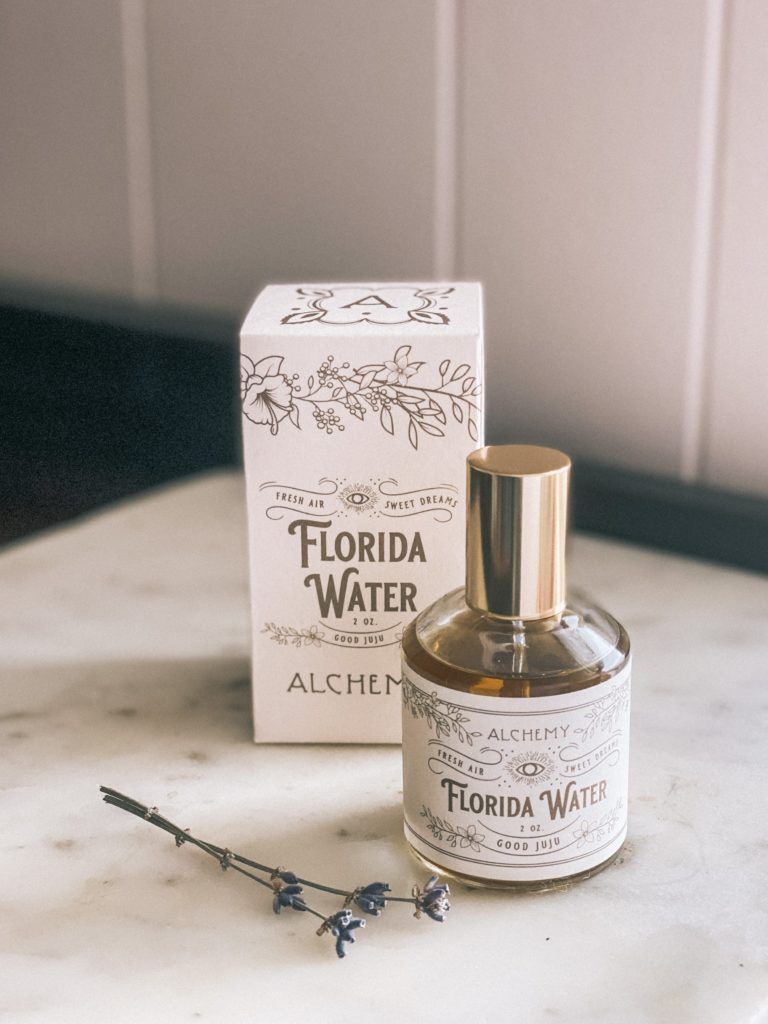
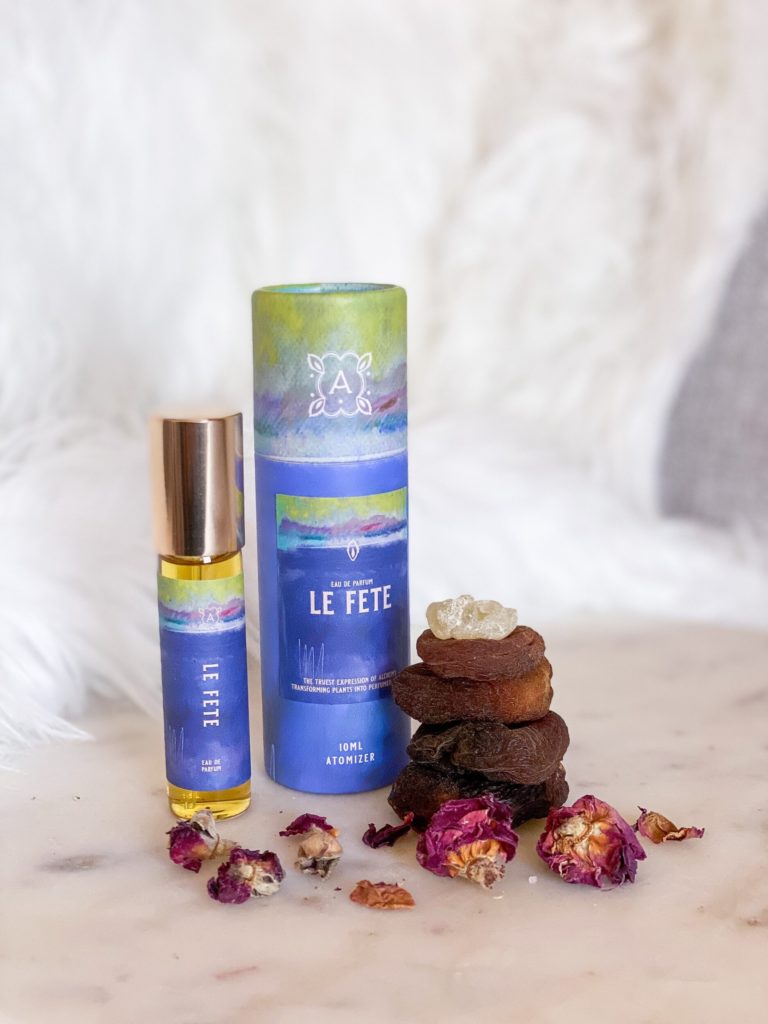
Price Range: $25 – $62
Scent Profile: Feminine, unisex
Products: Spirit water cologne, eau de perfume
Alchemy creates clean and sustainable natural perfume oils and sprays that support a slow-living lifestyle and self-care practices.
Hand-poured and packaged in Ferndale, Michigan, these natural fragrances are made with plant-based and 100% synthetic-free ingredients, harvested from all parts of a plant, and created using traditional techniques.
With artist letter-pressed packaging and glowing reviews, Alchemy sets itself apart as quintessential.
6 Additional “PRETTY GOOD” Phthalate-Free Perfume Brands
These brands are better than your conventional perfume brands, but they also have a few shortcomings, too.
- DedCool: Made in L.A., this gender-neutral, vegan, and cruelty-free brand is made without any parabens, phthalates, carcinogens, EDTA, fillers, or animal by-products. While it’s made with organic extracts, they also use a “proprietary” fragrance blend, so not all of their ingredients are publicly available.
- Maison Louis Marie: This fragrance brand (which is based on a family tradition that’s over 200 years old!) is free from a long list of toxic ingredients, however, they still don’t list the actual ingredients that are included in each of their scents. So while Maison Louis Marie is probably a safe bet, I can’t get behind it 100% at this time.
- LINNIC: Uses all plant-based ingredients with phthalate-free fragrances (but doesn’t list what the actual fragrance ingredients are).
- CLEAN Beauty Collective: This is one of the only safer brands available at department stores like Macy’s. While they have a great “No To List” and most of their ingredients are safe, they lack transparency in some areas.
- Pacifica: Available at big box stores like Target, this cruelty-free and vegan brand carries a wide range of scents. While they’re mostly non-toxic, they do use a couple of questionable ingredients like benzyl benzoate and they could use some more transparency, too (their “parfum” includes “our scent blend with natural and/or essential oils,” but they don’t actually list what those oils are).
- Good Chemistry: This is another one that’s available at Target. While they’re cruelty-free and vegan fragrances are made without parabens, phthalates, or sulfates, they don’t list their actual ingredients.
Most Toxic Perfume Brands
Unfortunately, the following perfume brands don’t disclose their fragrance ingredient lists, so they can’t be considered non-toxic. Many of them have little to know safety or sustainability policies in place as well.
- Byredo
- Calvin Klein
- Clinique
- Chanel
- Dior
- Dolce & Gabbana
- Elizabeth Arden
- Estée Lauder
- Givenchy
- Gucci
- Hermés
- Jo Malone London
- Juice Couture
- Lancome
- LUSH
- Marc Jacobs
- Philosophy
- Ralph Lauren
- Raw Spirit
- Tiffany & Co.
- Tom Ford
- Versace
- Yves Saint Laurent
An Even Deeper Dive into Perfume
What Is Perfume?
It might seem like a silly question, but wearing perfume has not always been about just smelling good.
For centuries, wearable fragrances were used for spiritual practices, for communal rituals, and for their medicinal values.
And it wasn’t just about the product and its purpose; the process of growing, extracting, and creating the “potions” was just as valued. Historically, fragrances have always derived from nature and many of the non-toxic perfume brands I’ve shared in this article view perfumery as an art form conceived and inspired by nature.
Wanting to smell good goes beyond vanity or “covering a stink.” In the same way our sense of taste craves nourishment through food, there is an instinctive reason our olfactory sense is attracted to so many healthful botanicals. Let this be a proposal to seek our wearable fragrances not for hiding our detoxing stink, but for helping our body function and battle the toxins around us.
But it’s not just about smelling good. Fragrances also trigger mental associations, memories, and pheromones. This is where the mind, body, and spirit connection is really strong—when it comes to perfume, they’re all connected!
How Much Of The Perfume Is Absorbed Into My Body?
Your skin is a powerful barrier that has systems in place that stop or minimize certain toxicants from getting into your bloodstream.
Not everything you put into your skin gets absorbed.
That said, the cosmetics industry uses ingredients called penetration enhancers to make things easier for your skin to absorb. So how much of a product gets absorbed depends on the formulation of the product.
So basically, we absorb some but not all of what we put on our skin (somewhere around 64% on average).
Final Thoughts on Phthalate-Free & Non-Toxic Body Sprays & Fragrances
Natural, non-toxic perfumes are not impossible to find and your body will thank you in the long run! But finding the right scent (and brand) can be tricky.
When shopping for non-toxic perfumes (not vetted by me), gauge the ingredient transparency from the brand. Simply having nothing to hide usually indicates a degree of safety at the very least.
Pay attention to the brand’s mission, product ethos, purpose, and environmental impact. This will show you a more robust scope of the brand rather than just checking the product label for non-toxic perfume ingredients.
Finally, in addition to the health benefits of a natural fragrance, buying from the brands listed here is a great opportunity to support small, eco-conscious businesses and artisans!

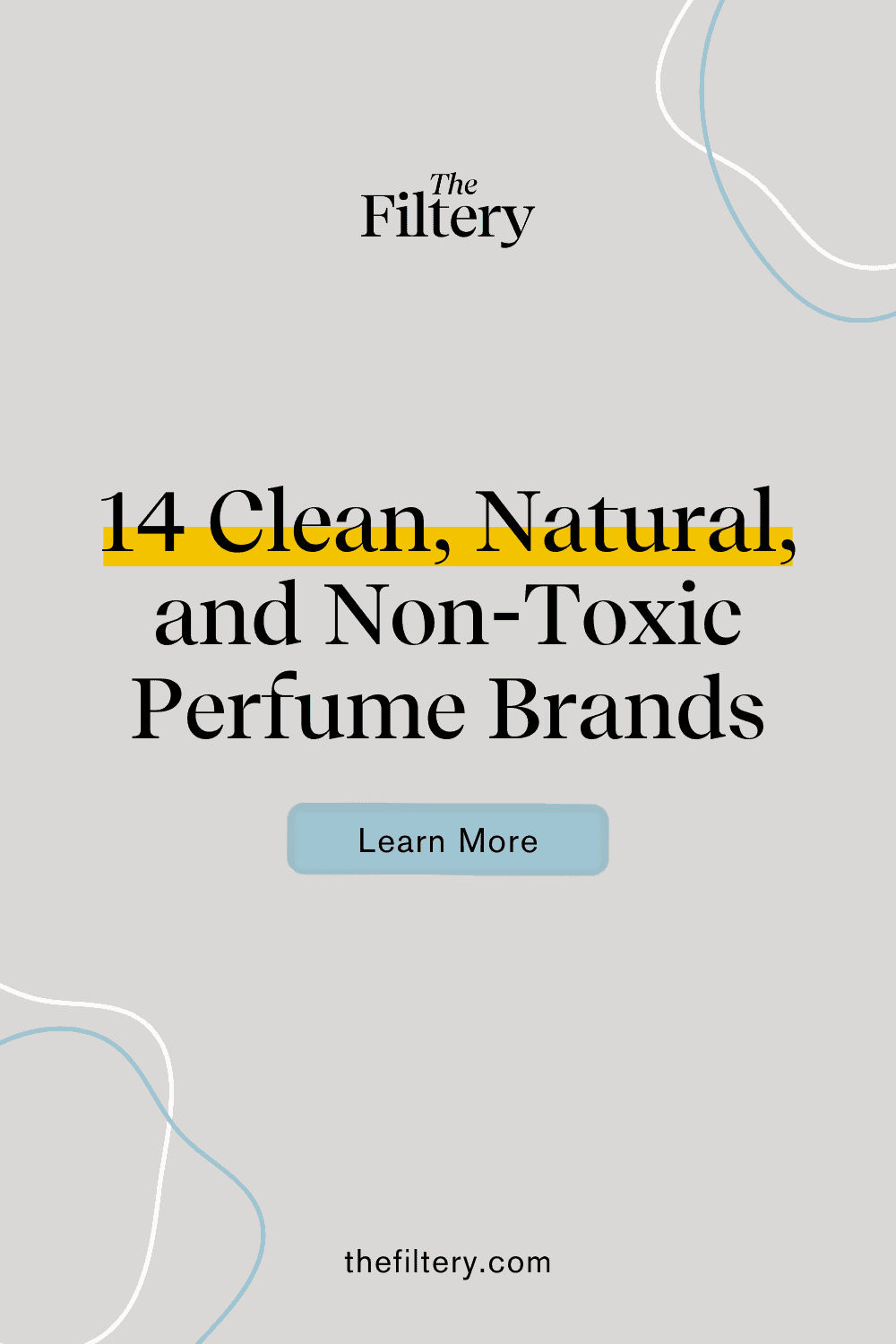
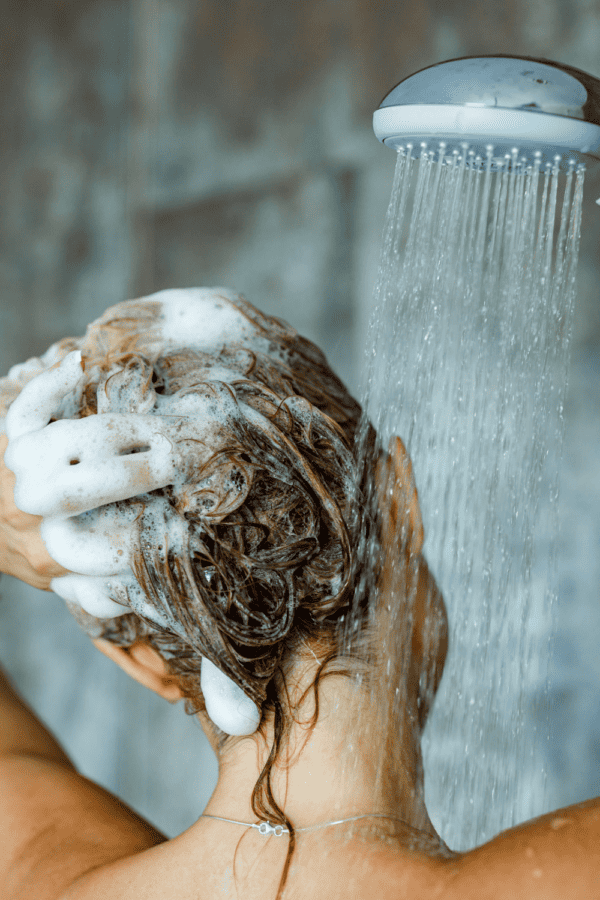
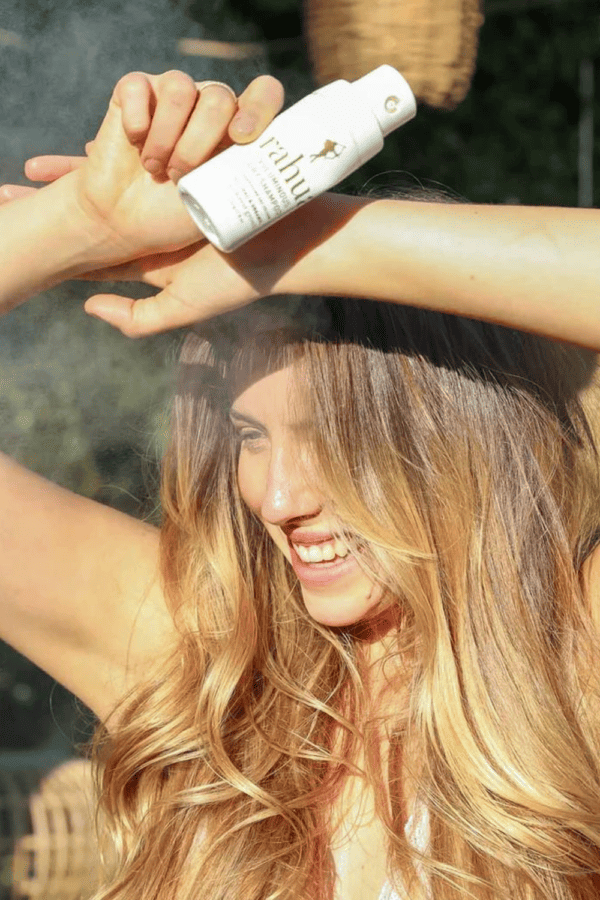
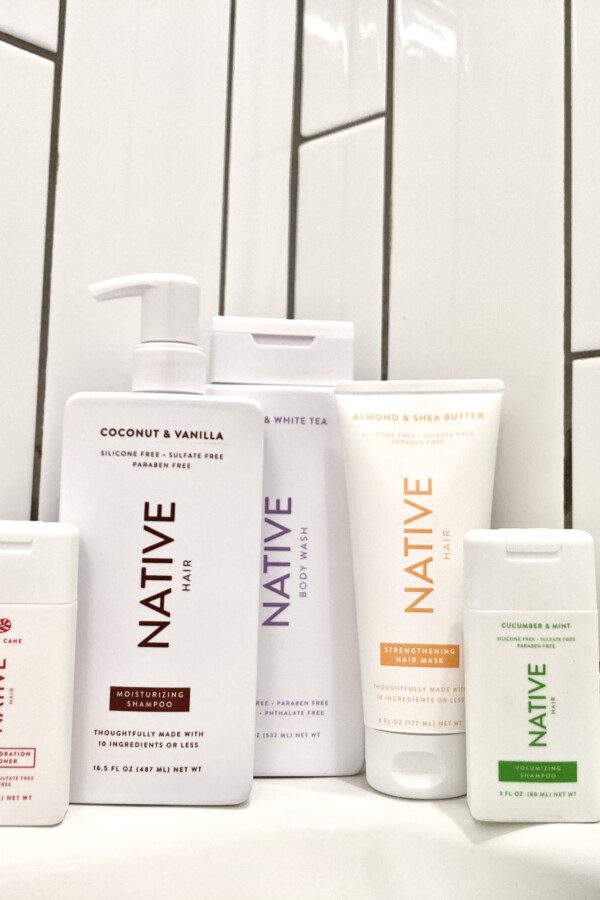
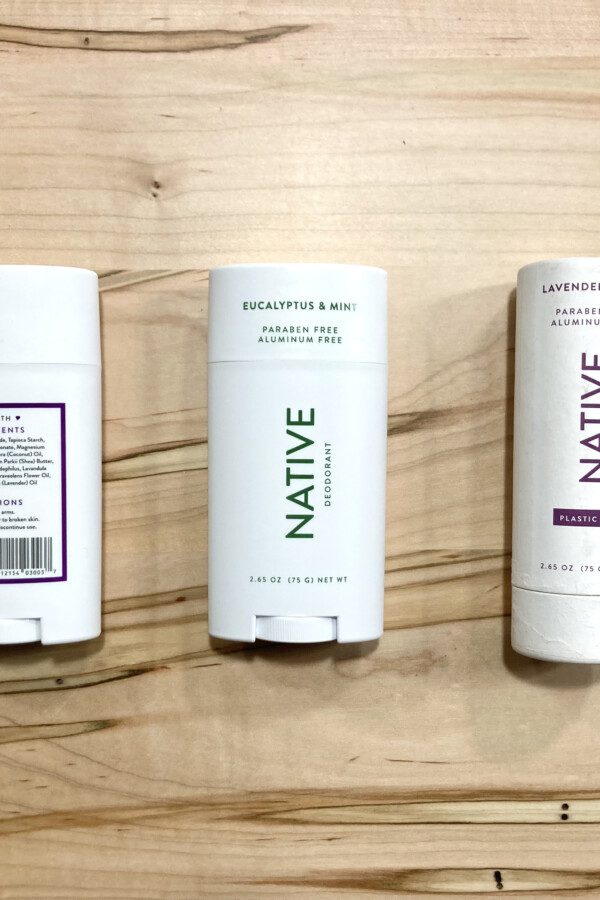
Great article, thanks! What about Sol de Janeiro hair & body sprays? They make the classic Brazilian Crush. They advertise as phthalate and paraben free and list all ingredients on their website.
Hi MB, Unfortunately, Sol de Janeiro doesn’t ACTUALLY list all of their ingredients on their website (at least not that I can find!). If you look under the Ingredients on the product page, you’ll see “Parfum (Fragrance)” listed, which could mean 3,500+ different ingredients are included (and they don’t have to label it accordingly). It’s definitely a good thing that they’re free from phthalates and parabens, but I can’t totally recommend them at this time.